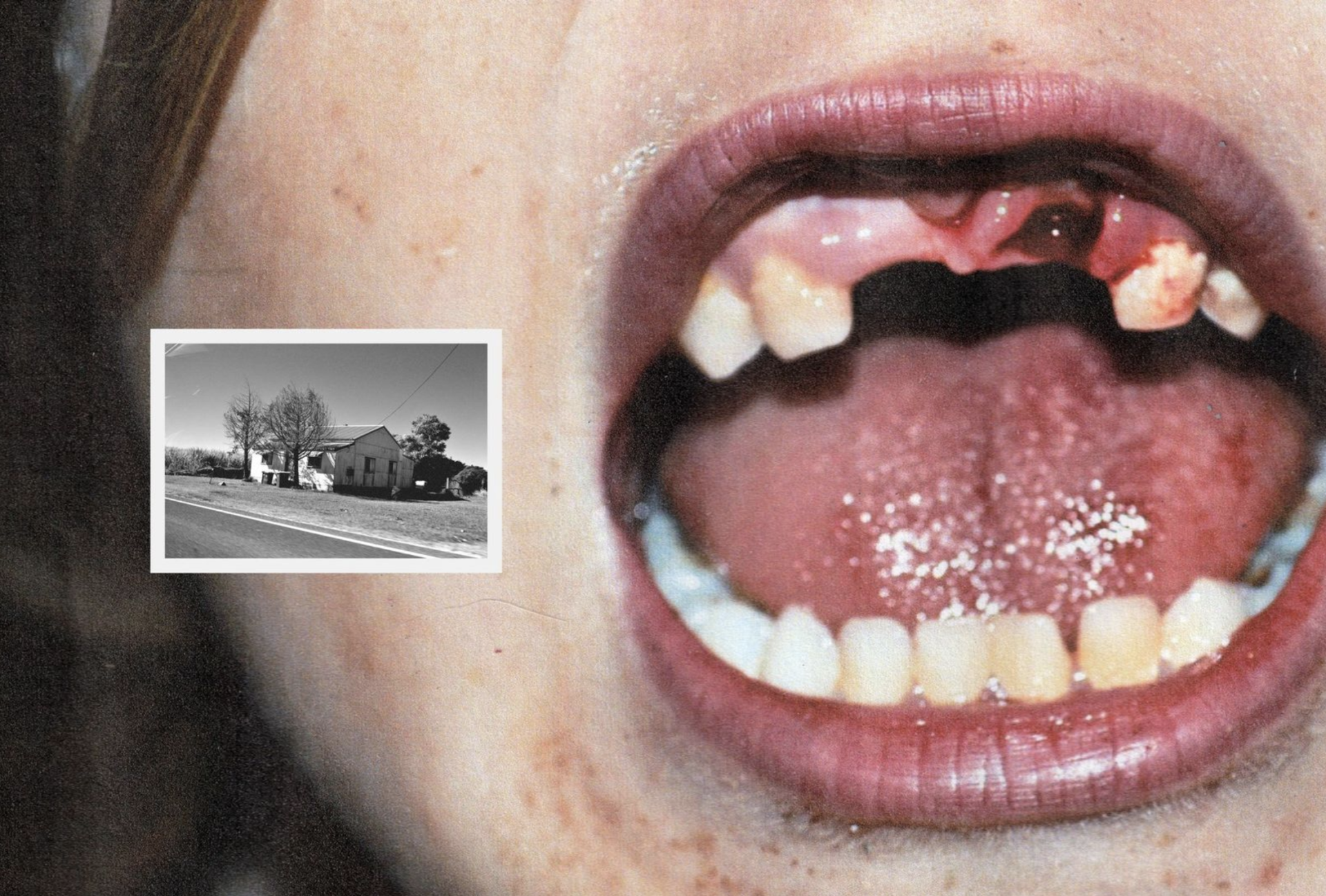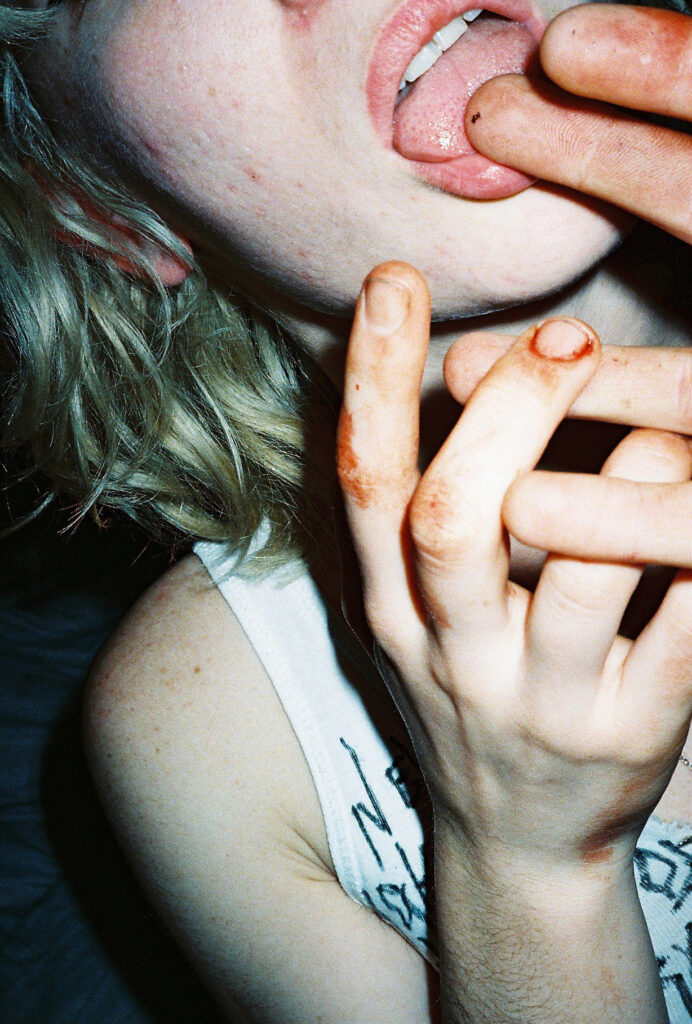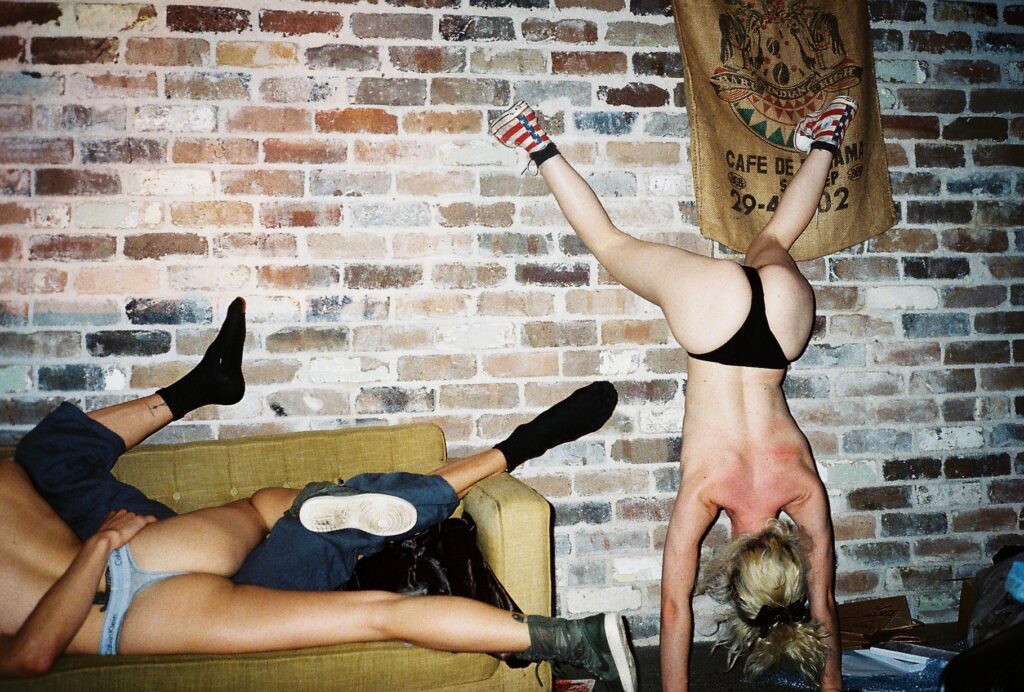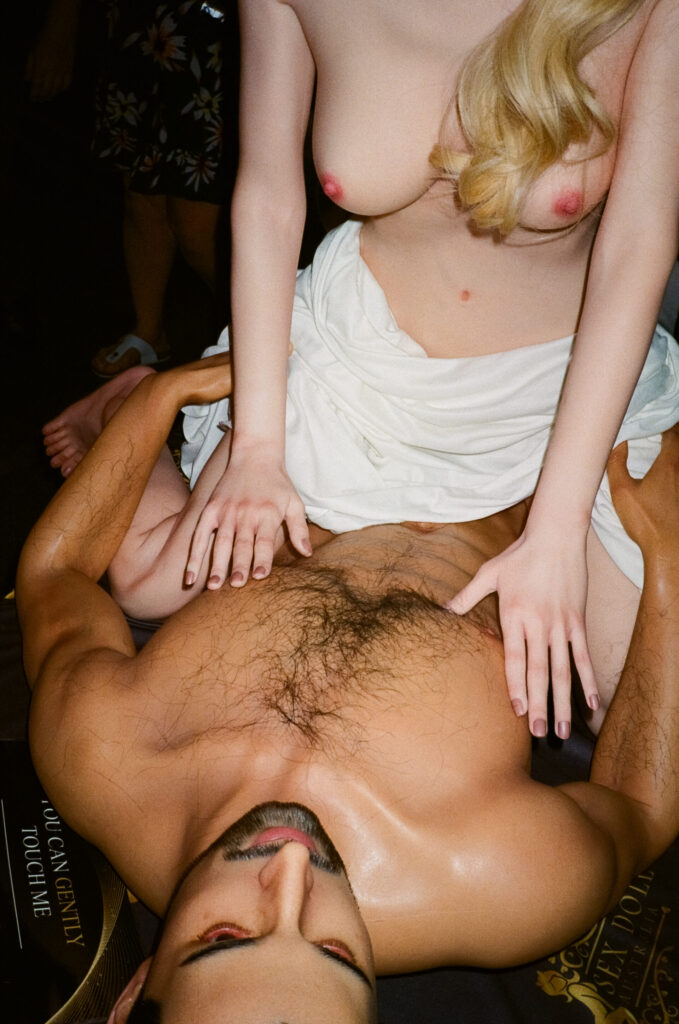R.Bliss’ Latest Book is a Declaration of Love

Through an unflinching lens, photographer Rahnee Bliss (R.Bliss) explores her own perversity as she lays her relationships with men, women, friends and strangers bare in her new book, Love. The 158-page turner revels in obscenity, exposing Bliss’s graphic 35mm film photography, handwritten diary entries and personal experiences of humour, romance and melancholy.
On the eve of the book’s launch, Bliss sat down with to Be, and publisher Oscar O’Shea to explain why a printed book felt like the right medium, how images can be recontextualised and re-seen, and when photography first felt like a path forward. Bliss explains that this book is not a sanitised or romanticised portrayal of life, but a rejection of societal expectations and a celebration of the unapologetic self.
Rachel Weinberg You’ve just released your book Love. I wanted to start by casting back to the initial steps. Who instigated the book’s creation and design?
Oscar O’shea It was a submission. Rahnee sent through a pretty well-curated concept for the book that included just a big amalgamation of images. She wasn’t 100% sure what images would go where, but she had a complete understanding of the premise. She even had some pretty early ideas for design, which we have actually incorporated into the book.
R.Bliss I found Oscar through a book that I was gifted for my 25th birthday. It was his book Carnival, which is a documentarian film/photo series about the Melbourne Races. I thought it was brilliant. It really encapsulated the grit and the grime of the day, and the alcohol-fuelled ugliness of the racing industry.
I went to the back of the book and found the publishing details. And I thought, if I'm going to make my book, which was already an idea that had been in the back of my mind for two years, I wanted MOM to do it.
RW Two years is quite substantial. Why did print seem like a relevant medium for you? You're a reasonably young photographer, and a lot of photographers assume that the way to get their work out is through social media. With that being the reality for many, why was print an avenue that you felt was accessible and relevant?
RB It's a good question. I am really grateful for social media. It's been a great access point to share my work. It's how I found a lot of artists and I owe everything to it, really. But I do think it is a temporary method. I value more physical and tangible art forms. I've been taking photos for ten years, at least. I wanted more to show for my work that than just a fucking Instagram page. You know what I mean?
OO I think social media really struggles to give justice to good work.
RB And it censors it, quite substantially.
OO Especially with your work. Even going through the process of marketing this book, choosing spreads that we can share without them being taken down by Instagram. As a platform, social media is not actually built for sharing art because it's completely un-curated.
RB I think the internet is not what it used to be. I spent a lot of time on the computer as a teenager, and I found so many amazing artists. Actually, that reminds me. I used to have this penpal named Joanne, who was a silicone mask-wearer and cross-dresser.
RB I think the sense of censorship has been really encroaching over the last couple of years. I think we're just going to see art become more and more homogenised. That’s enough of a reason to put something tangible and physical out that will hopefully last longer than a social media post. It will hopefully even outlast me.
OO There's also no follow account on a book; there's no preconceived notion about where the artist is in their career. There's no preconceived notion about who they even are. You don't get a face with it. You don't get anything but the art. It's nice that in such a shallow and judgmental culture, which social media creates, an artist can create works that are viewed based on their quality.
RW There's also something to say about access, in the sense that we're choosing to access this content and it's not being shared or given to us. Oscar, as the publisher and designer, you are tasked with creating the story's through-line. How do you tell a story that's not yours to tell?
OO It's a really strange thing to look at images with zero context and zero emotional attachment. Rahnee had more images than I've ever seen for a project. It was insane; there were over a thousand, probably. And those were all images that were of quality and could be in a book. All the images were so personal, intimate, and based on a lot of real life experiences. There was so much carried through the images, even beyond what they looked like. We went through the photos together and asked ourselves, what are we trying to do with this book? And how is it going to be viewed by someone that has no experience or preconceived notion of the subjects?
RW I think you have to maintain an objective position, even though by the end of it, it becomes your work too.
OO I mean, these images are totally different to me now from when they were first sent to me. Now I have my own ideas and feelings towards them. That's what's also cool about this project: there are so many images that are layered. Rahnee is able to capture these moments with so much energy and so much honesty and as a reader you're really able to delve into a narrative and feel like you really understand the situation. It's a very bizarre effect. It's very cool.
RW Rahnee, for those that haven’t seen the book, can you describe the images? Where are they from, when did you take them, what do they mean, whether they mean anything?
RB It's a difficult question to answer. They span across a long period, so they mean a lot of different things. A lot of them have come from a more observational place. I guess it's just me adapting to my surroundings and documenting it. I think there's a lot of beauty and a lot of vulnerability in my life and in all the people I surround myself with. And I think the images are just a testament to the people that are around me; the people who are able to share that vulnerability in places of play, in places of pain, in places of joy. I think photography, as a medium, relies so heavily on other people. I rely so heavily on other people to share themselves with me and a lot of these images have been me connecting with others. It's definitely become more of a compulsion.
RW How come you didn't use an image on the book’s cover?
RB I felt it a bit more titillating and alluring to not have an image. You have to look inside.
RW Do you find that's a sentiment of your work in general? Viewers have to dive in and “look inside”?
RB I'm not totally sure if that's for me to answer.
OO It felt so appropriate not to have an image on the cover. The photo books I’ve been a part of are often based on a single trip or experience. Rarely am I able to make a book that spans this amount of time. It is such a world-building project. I think this book spans so much design-wise, so much content-wise, and it's based around a world that Rahnee lives in and has created. It felt really appropriate to have the book be judged as an entire object. Rahnee really wanted to do the cover and I'm so happy she pushed for it because it really does encapsulate the feeling of the photos rather than the style. It encapsulates the feeling of Rahnee's world.
RB The cover is a t-shirt that I own that says L-O-V-E and the O is a condom running through it. So I felt like that encapsulated a little bit of the world.
RW Rahnee, how did you first get into photography?
RB I consider myself self-taught. It's been a lot of trial-and-error and a lot of experimenting. Just before I dropped out of high school, I did a short course at a TAFE in Wollongong, where I learnt to develop black-and-white film. I remember that being one of the few joys at the time, although I wagged a lot. I remember for one of the class trips, we had to go to the graveyard and take photos. There were beautiful tombstones, all these decaying leaves and trees, but I only took photos of the images of the people on the tombstones. I thought they were the most exciting part. I always gravitated towards photographing people. It’s always been that way. Growing up in the 2000s, photography was also one of the most accessible mediums to explore.
I got gifted a Pentax K1000, which I love, but that's only been with me for the last few years. Some of the images that you see in the book were taken with that camera. Most of them, though, were taken with the Fuji Klasse. It's the poor man's Contax T2. That camera has gone to the dirtiest and sweatiest clubs. Its been rummaged through my handbag in the sand. Its been such a brick and has been so solid. I think it may be on the way out now, but I can't recommend it enough to people.
RW How has creating the book influenced your perception of your photographs?
RB Its helped me build more context. The pairing of images and how you can actually spread them and lay them out together, can really change the context and meaning. Oscar is really quite good at it. He paired stuff that I would never see going together. I look at the work I’ve done, maybe a photograph that I shot when I were 16, and then something that I shot last month, and I can see how I told the same story in different times.
OO I've learnt through doing this project how much you can contextualise a photo just based off where it sits in a book and what it's placed next to.
RB Something that I wasn't really privy to prior to this experience, having not made a book before, and it was grounding knowledge.
OO I don't think it's something to be aware of even when taking images.
RB I think it comes out later. There are photos in there that I find really beautiful, and then there are photos in there that I find really ugly. I think sometimes it might not be the easiest image to look at, and some are pretty sexually explicit. But I do think that that's a pretty powerful and provoking component and one that I think is valuable.
R.Bliss’s Love is published by MOM. The book is out now and available to order here.
Join the Team Behind 001 POP UP as They Elevate Emerging Artists from Across Victoria
By Annabel Blue
Beneath Thibaut Grevet's Blurry Lines
By Anna Prudhomme
to Be Normal with ... Ash Pierce
By To Be Team
to Be Issue 07 Launch
By To Be Team
Cintra Wilson
By Annabel Blue
Semi Permanent Returns, launching PERMANENT, the Art and Design Bookfair
By Annabel Blue






















